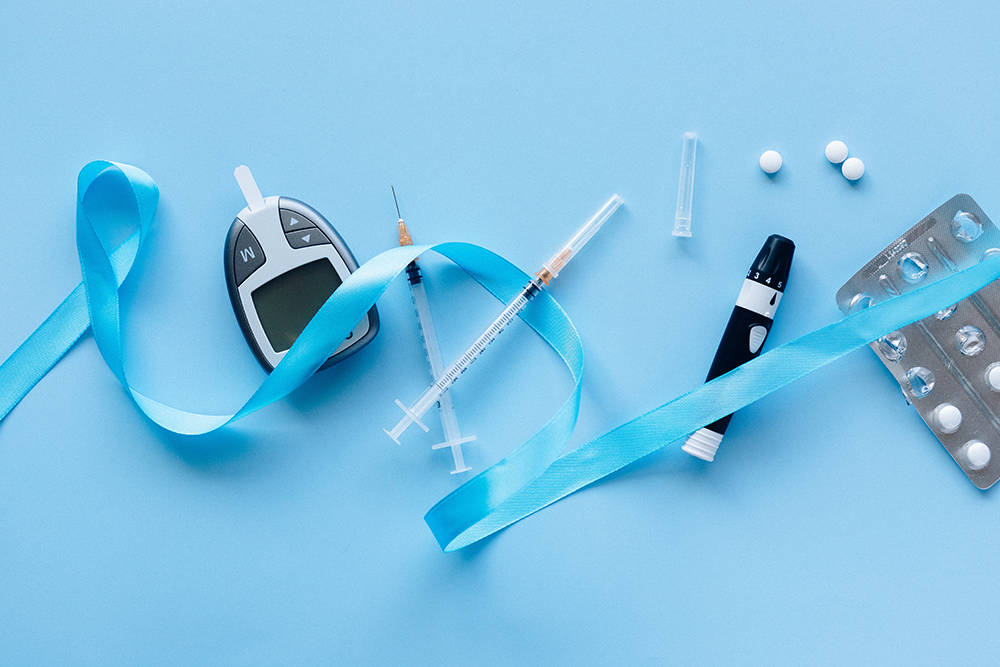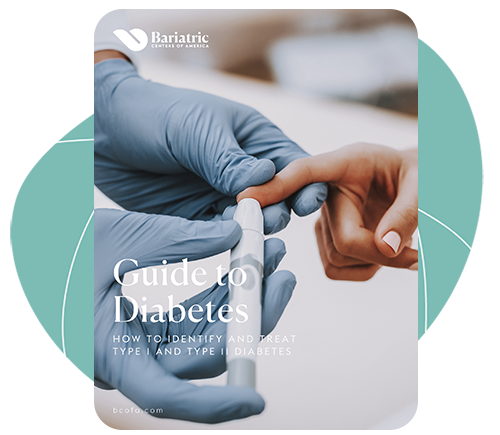
Diabetes is a common hormone disorder that affects many overweight and obese individuals. There is a strong correlation between individuals who have a higher body mass index (BMI) and those who develop type 2 diabetes. Here is a breakdown of diabetes for the bariatric patient.
Diabetes mellitus (DM) is an endocrine (hormonal) disorder characterized by frequently high blood sugar levels over a prolonged period of time. Our glucose (sugar) levels in our blood are tightly regulated by insulin (a hormone made by the pancreas), which is designed to keep our blood sugar level in a reasonably narrow range. When the glucose levels in the blood are persistently too high, this will ultimately impact the body's organs and tissues, resulting in long-term damage and possibly death. The name "diabetes" comes from the Latin meaning of "pass-through," referring to increased urination and Mellitus, aka sweetened. In the past, diabetes mellitus was referred to as sweet urine.

Breakdown of Diabetes for the Bariatric Patient
Symptoms of Diabetes
The most common initial symptoms of diabetes are frequent urination, thirst, and increased hunger. The persistently high glucose levels in the blood cause kidneys to excrete glucose into the urine (sweet urine). Before measuring the glucose levels in the blood, physicians would suspect the diagnosis of diabetes when the patient's urine tasted sweet. The increased glucose in the urine results in decreased water absorption by the kidneys, leading to increased urine production and fluid losses that ultimately cause dehydration and increased thirst.
Furthermore, the lower levels of glucose in the body's cells stimulate increased appetite and hunger. If the glucose level gets too high, then many acute complications can arise, such as diabetic ketoacidosis, hyperosmolar hyperglycemic state, diabetic coma, and even death. Other less specific signs of diabetes are blurred vision, headaches, fatigue, mental fog, and poor wound healing.
Complications of Diabetes
Long term, persistently elevated glucose levels will ultimately lead to damage to small blood vessels limiting blood flow to the regions of the body that these vessels serve. The most common long-term complications from this damage are seen in the vital organs such as the heart (cardiovascular disease leading to heart attacks), brain (leading to strokes), and the kidney (leading to kidney failure and ultimately dialysis).

Additionally, damage to the body’s smaller blood vessels often leads to poor blood flow to the feet, which can cause foot ulcers, damage to the nerves causing neuropathy (numbness, tingling, and burning pain), and damage to the small blood vessels in the eyes leading to visual impairment and even blindness.
Types of Diabetes
Diving further into the breakdown of diabetes, it is important to understand the different types of diabetes. Diabetes is due to either the pancreas not producing enough insulin or the body’s cells not responding properly to the insulin produced. There are three main types of diabetes mellitus:[2]
- Type 1 diabetes, commonly referred to as Juvenile diabetes, results from the failure of the pancreas to produce enough insulin due to the loss of cells in the pancreas that make insulin. Typically type 1 DM occurs in childhood or adolescence. Although, some individuals may have a slow loss in the insulin-producing cells, leading to a form of Type 1 DM that presents later in life. It is believed that the loss of these insulin-producing cells is caused by an autoimmune disorder that leads to the death of these cells in the pancreas. The cause of this autoimmune response is unknown.
- Type 2 diabetes, known as insulin resistance, is when the body’s cells fail to respond to insulin properly. This form of diabetes is often referred to as “non-insulin-dependent diabetes mellitus” (NIDDM) or “adult-onset diabetes .”The cause of this type of diabetes is not clearly known; however it is most commonly associated with a combination of excessive body weight and insufficient exercise.
- Gestational diabetes is the third main form of diabetes and occurs when pregnant women without a previous history of diabetes develop high blood sugar levels. Typically, the glucose levels normalize after delivery, making this form of diabetes a less serious condition.
Breakdown of Diabetes Statistics
Diabetes is the 7th leading cause of death worldwide and is the most expensive long-term disease to treat. As of 2019, an estimated 463 million people had diabetes worldwide, accounting for about 8% of the world’s population. In the US, where the diet of most individuals is higher in carbohydrates and obesity is more prevalent, the rates approach 10% of the population.
Type 2 diabetes accounts for about 90% of all cases. Given the rising trend in the rates of obesity, it appears the incidence of diabetes will continue to rise. Additionally, due to the long-term health consequences of diabetes, the risk of early death has nearly doubled, resulting in almost 4 million deaths a year. As such, it is not surprising that the cost of diabetes treatment in the United States is over $300 billion, with the average medical expenditures for patients with diabetes being twice that of non-diabetics.
Be sure to follow our other blogs as dive into the breakdown of diabetes for the bariatric patient and how it impacts obesity.












